Perennial flowers are an easy way to add long-lasting beauty to your yard or garden. Whether you are an avid, experienced gardener or just getting started, you’ll love these long-blooming perennial flowers.
Perennials return year after year, and many of them bloom all spring or summer. Let’s explore some of our favorite long-blooming perennial flowers.
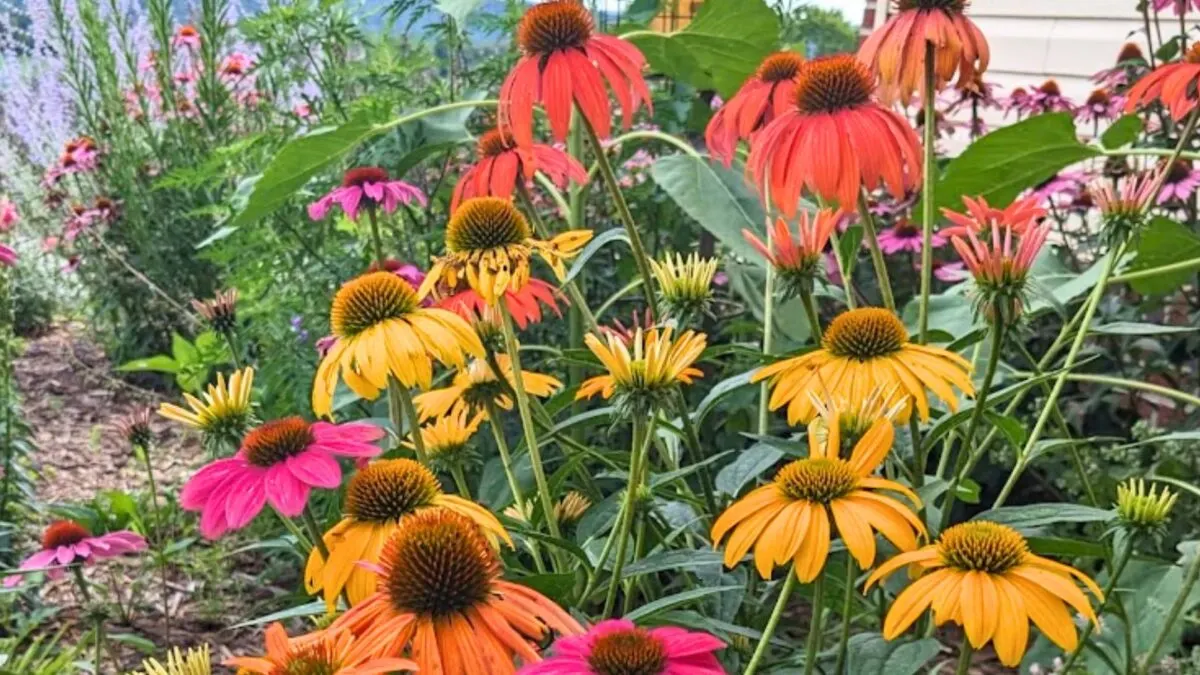
1. Hydrangeas (Hydrangea macrophylla)

USDA Hardiness Zones 3-8
Hydrangeas are the superstars of the flower garden. These showy shrubs add gorgeous pastel colors to your garden, and they will bloom from late spring into fall. Hydrangeas are remarkably low maintenance (here’s how to care for hydrangeas) and produce giant flower heads covered with colorful clusters of flowers.
Hydrangeas can be found in blue, pink, white, and red (here’s how to change the color of your hydrangea’s flowers). These large plants make wonderful foundation plantings or shrub borders. Another reason to love Hydrangeas is that they will grow beautifully in partial shade to full sun.
2. Coneflower (Echinacea)
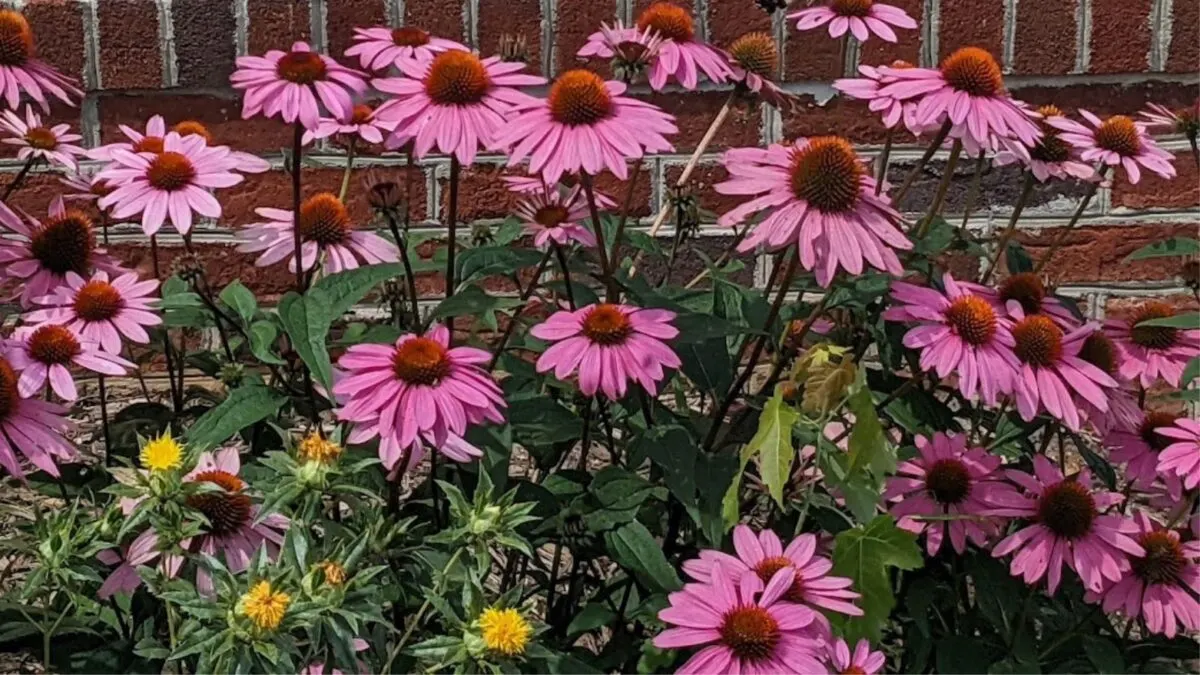
USDA Hardiness Zones 3-10
Also known as echinacea, coneflowers bloom profusely all summer long in most areas. Equally important, these gorgeous long-blooming perennial flowers are extremely cold-hardy. The plants are tall, growing up to four feet in height, and the cone-shaped flowers can be found in shades of red, pink, purple, yellow, and orange.
Since coneflowers are so tall, they’re perfect for garden borders, flower beds, and as a background for other flowers in your garden. These perennial flowers love the sun and thrive best in well-draining soil.
3. Russian sage (Perovskia atriplicifolia)
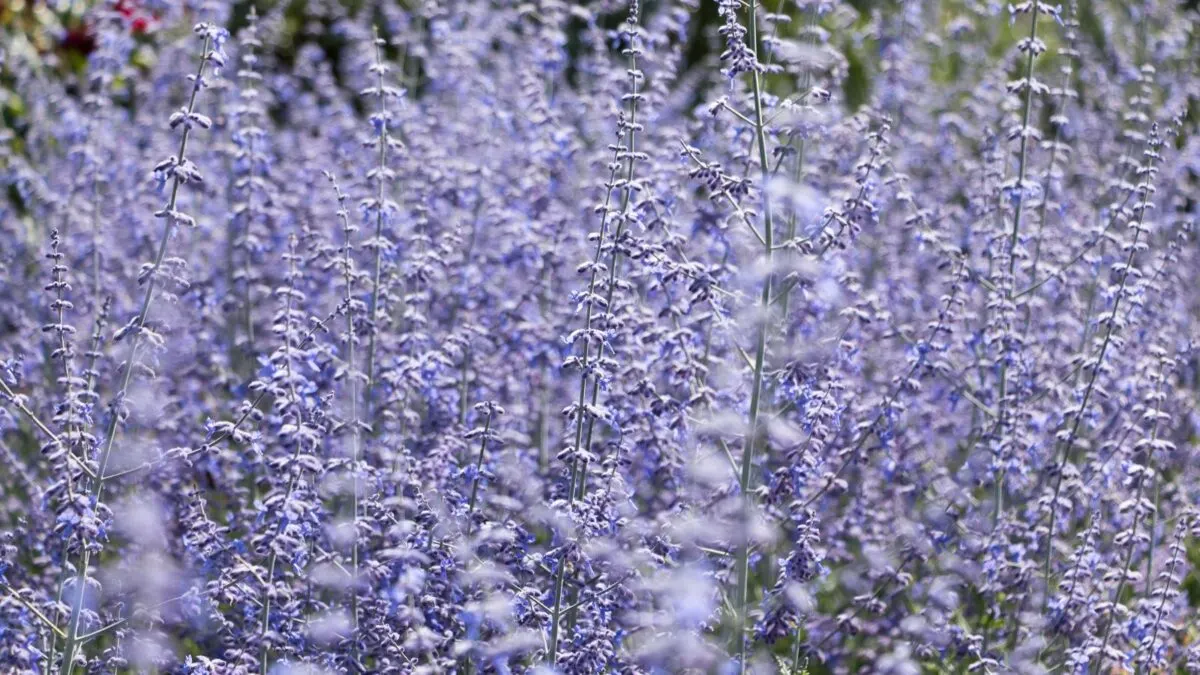
USDA Hardiness Zones 4-10
Also known as Lacey Blue Russian Sage, this sturdy plant made our list because of its ability to remain upright and compact in the garden. In addition to adding vivid purple-blue spikes to the garden, Russian Sage also has a wonderful scent.
Because it blooms all summer (about 12 weeks), Russian Sage is ideal for feeding pollinators late in the season. Plant some in your garden if you want hummingbirds, butterflies, and bees.
This plant is an excellent alternative to lavender. If you have problems with deer entering your garden, Russian Sage will deter them. For optimal effect, Russian Sage plants should be planted in groups.
4. Stella D’Oro reblooming daylily (Hemerocallis Stella D’Oro)

USDA Hardiness Zones 3-9
There are three types of Daylilies: rebloomers, one-time bloomers, and everbloomers. If you want plants that come back every year, I suggest planting Everblooming Daylilies. These beautiful classic favorites bloom from early summer all the way into early fall. One gorgeous cultivar is the Happy Ever Appster series, which includes beautiful ones like “When My Sweetheart Returns.”
You will be rewarded with hundreds of blooms every season with these flowers. Everblooming Daylilies will grow in partial shade, but they will offer more blooms if they receive full sun for six or more hours daily.
5. Blanket flower (Gaillardia pulchella)

USDA Hardiness Zones 3-10
Known colloquially as “Indian Blankets” or “Sunset Snappy Blanket Flowers,” these perennials grow as wildflowers in some areas of the United States. That’s just how hardy they are. Blankets tolerate extremes of cold and heat, making a wonderful ground cover in large flower beds and even meadows.
An exceptionally long-blooming flower, the blanket flowers thrive in sunny landscapes and bloom from early summer through the last days before frost in autumn.
These flowers are great for pollinators and attract butterflies and bees alike. To ensure they overwinter successfully, plant blanket flowers in well-drained soil and full sun.
6. Calamint (Calamintha)

USDA Hardiness Zones 4-9
If you’re planning a “white garden,” calamint will make a gorgeous addition. The flowers range from very pale blue to white, and they will surely add liveliness to any garden. These blossoms bloom profusely and produce thousands of tiny buds.
These flowers are the perfect size for attracting honeybees and the blooms are also fragrant. Calamint blooms from early summer through early fall. To prevent reseeding, you can shear back the whole plant in late July by about 25%. This will ensure you enjoy a fresh new flush of flowers and foliage.
7. Hummingbird mint (Agastache)
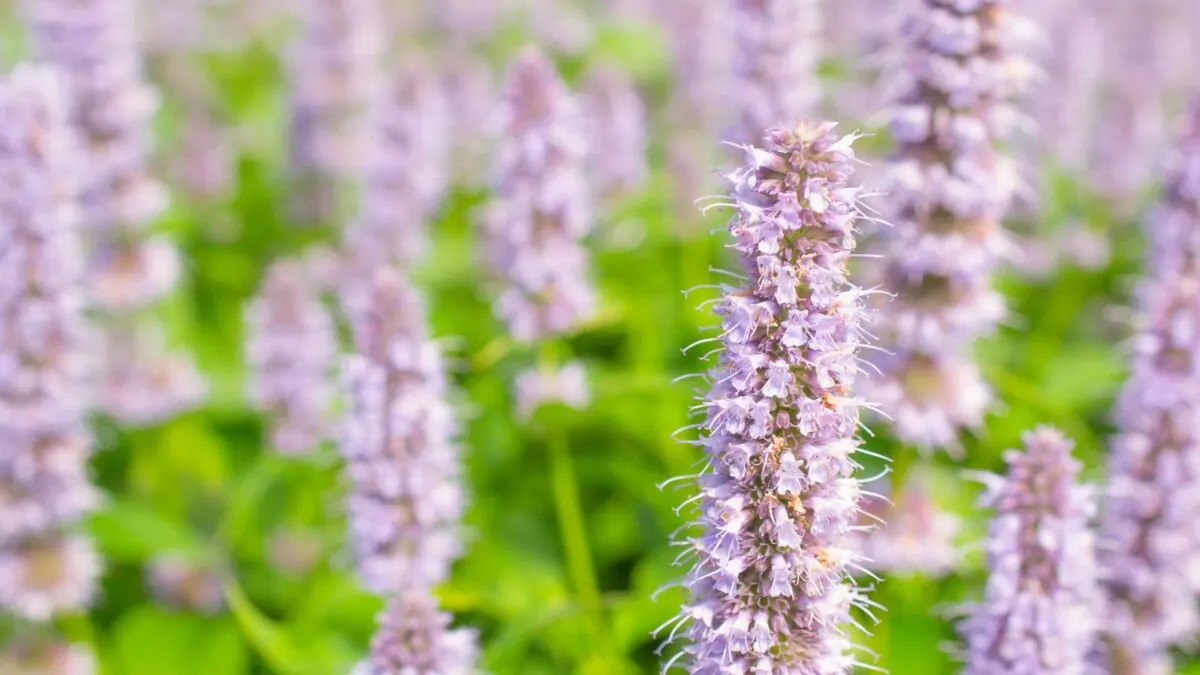
USDA Hardiness Zones 6-10
For an energizing burst of orange, consider the hummingbird mint (anise hyssop). Most people associate this gorgeous bush with the tall and spiky purple flowers of the anise hyssop, which come in varieties that bloom even longer and have feathery orange, pink, and yellow plumes. Like many of the other selections, anise hyssop attracts pollinators.
To get orange blooms, check out “Poquito Orange.” You can also plant some gorgeous “Rosie Posie” plants for even more color.
Anise hyssop will bloom without deadheading nonstop from early summer all the way through the end of early fall, making this plant one of the most prolific long-blooming perennials.
8. Fern-leaved bleeding heart (Dicentra formosa)

USDA Hardiness Zones 3-9
Flower enthusiasts love the old-fashioned bleeding hearts flowers, but they go dormant after going to seed in midsummer. To get this unique look in your perennial garden, consider an alternative like the Fern-Leaved Bleeding Hearts varieties “King of Hearts” or “Luxuriant.”
While the blossoms on these aren’t as showy as the old-fashioned cultivars, they bloom non-stop from late spring all the way into early fall.
These flowers are wonderful if you need something colorful to fill a partially shady area, and they also thrive in full shade. The soil for these flowers should be moist, rich, and well-drained.
9. Tickseed (Coreopsis verticillata)
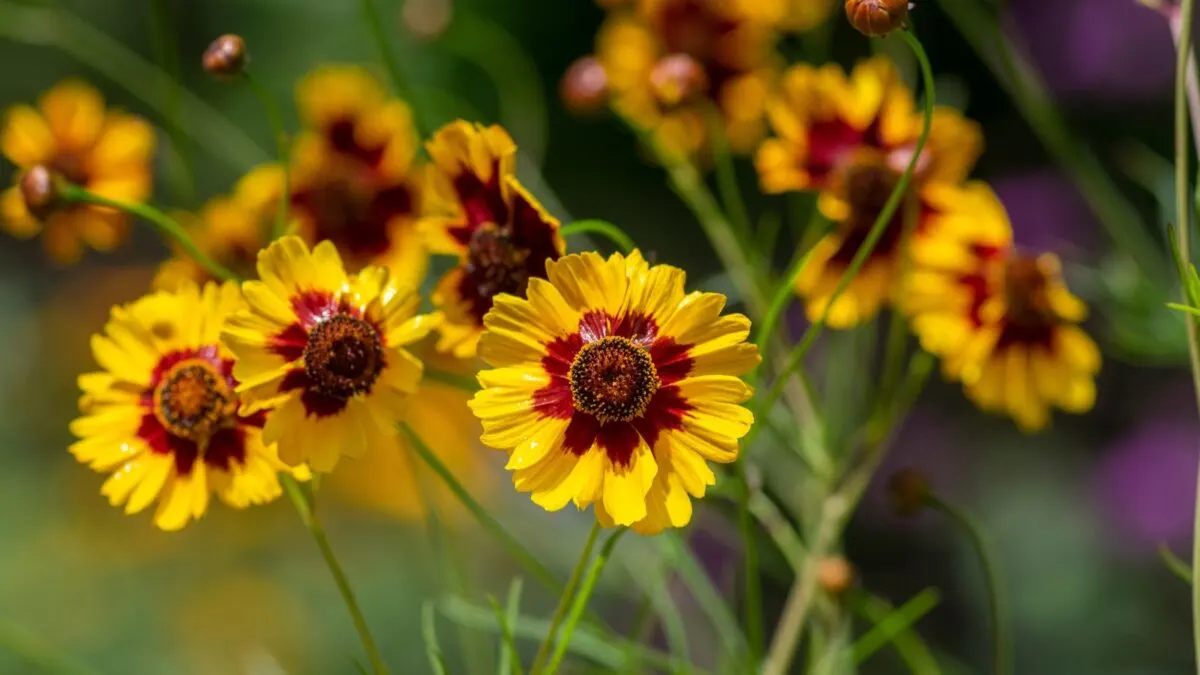
USDA Hardiness Zones 5-9
Thanks to advances in modern plant breeding, gardeners can enjoy some exceedingly long-blooming tickseed varieties, most notably the UpTick and Li’l Bang series. These series are less prone to worrisome powdery mildew than traditional varieties like Threadleaf.
Tickseed (sometimes called false sunflower), grow to be only about 12 inches tall, makes an excellent border flower, and thrives in average soil and all-day sun. Once they’re established, these flowers are drought tolerant. Even better, there is no need to deadhead them to get them to bloom all the way from late spring to early fall.
10. Yellow corydalis (Corydalis lutea)

USDA Hardiness Zones 5-7
For some refreshing yellow flowers, you will enjoy the lacy-textured Yellow Corydalis. This delicate-looking plant with bright yellow blooms produces brilliant color from early spring right up until frost yearly. Although it looks delicate, the Yellow Corydalis is hardy in Zones 5 and 6 and reseeds itself throughout the garden. The good thing is that it’s easy to pull them away from places where you don’t want them.
If you live in Zone 7 and plant Yellow Corydalis, your plants will bloom wonderfully in spring, but expect these plants to go dormant when it becomes scorching hot in summer.
11. Black-eyed Susan (Rudbeckia hirta)

USDA Hardiness Zones 3-9
For a burst of traditional color, you can’t go wrong with black-eyed Susans. These flowers are tall perennials that bloom from early summer into fall. The bright yellow flowers grow on top of stems that are between two and three feet tall.
Black-eyed Susans thrive in full sun and work perfectly at borders, in cottage gardens, or at the back of flower beds.
You can grow rudbeckias in partial shade, but they thrive in full sun. Another benefit of these cheerful flowers is that they’re drought-tolerant. If you need a cold-hardy version, check out “Little Goldstar” or Goldstrum.”
12. Blue star Japanese aster (Kalimeris incisa)

USDA Hardiness Zones 4-9
Although less well-known than other Japanese aster varieties, the Blue Star Japanese Aster is a blooming powerhouse in your landscape. Once established, these gorgeous flowers need only occasional watering. As a reward, they give us gorgeous, colorful blooms from early summer through fall every year.
These flowers bloom early in the season and don’t become as tall as the common Asters. Another benefit is that they don’t spread as other flowers do. The pale blue blossoms are reminiscent of small daisies, and butterflies love them.
13. Leather flower (Clematis)

USDA Hardiness Zones 4-10
Every garden needs a beautiful climbing flowering plant, so why not give Clematis a place in your perennial garden? Year after year, Clematis will deliver gorgeous blooms in whatever color you like. You can go with one color or grow shades of white, pink, red, purple, lilac, and even bicolor.
Clematis enjoys full sun and likes to climb, so be sure to plant it near a wall, trellis, or arbor. The delicately scented flowers bloom from late spring through fall. Small evergreen varieties are also available that can grow in containers or flower beds in clumps.
14. Festival star baby’s breath (Gypsophila paniculata)

USDA Hardiness Zones 3-9
Do you love arranging flowers into bouquets to decorate your home or gift to other people? Then you definitely want some festival star baby’s breath in your garden. Most baby’s breath cultivars go to seed by mid-summer, but Festival Star Baby’s breath will reward you with blooms from late summer to early fall.
This flower likes well-drained, alkaline soil. You will enjoy planting these in places you can tuck anywhere in the garden because they grow into plants that are 12 to 18 inches tall. These flowers dry beautifully as well.
15. Autumn joy stonecrop (Hylotelephium telephium)
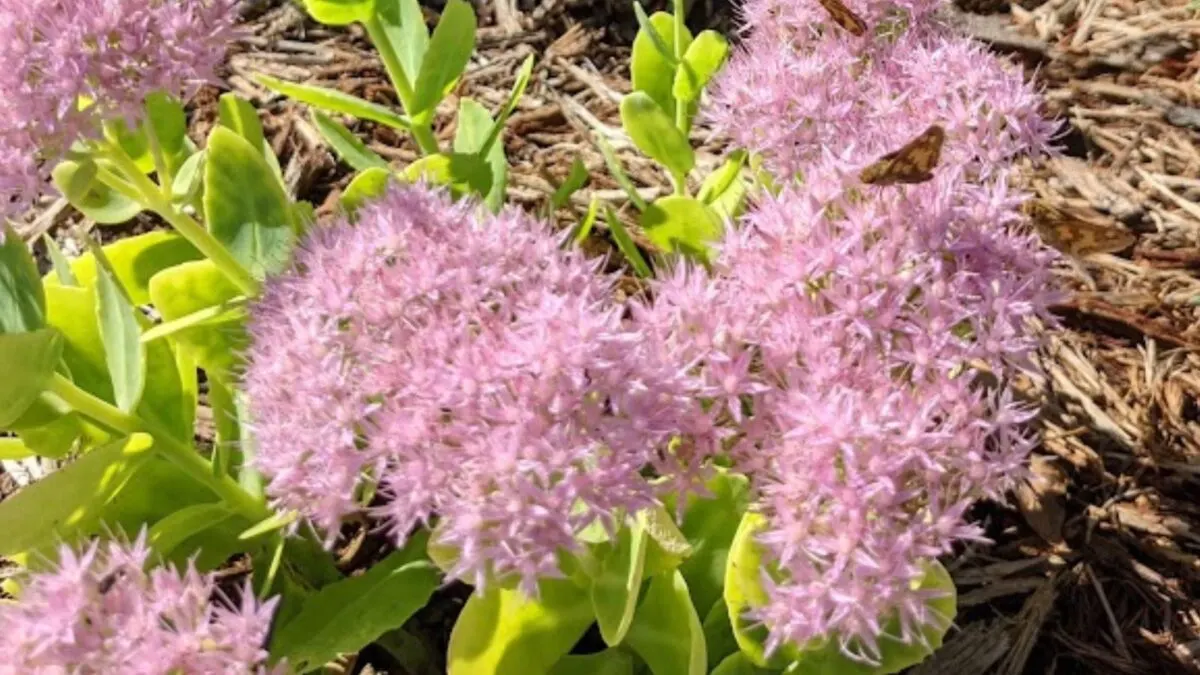
USDA Hardiness Zones 3-9
Autumn joy blooms in late summer, and the flowers take several weeks to darken to purple or rust-red in the fall. The blooms are, in fact, large masses of smaller flowers. These small flowers clump together in groups often more than three inches across. This long-flowering perennial is also long-lived.
Autumn joy grows slowly and requires nearly zero maintenance. After frost, shear the stems back to ground level, and you will enjoy your autumn joy plant for years to come. Plant this perennial in full sun for best results.
16. Garden phlox ( Phlox paniculata)

USDA Hardiness Zones 4-8
Every July, garden phlox begins gracing our gardens with its white and pink-purple blossoms. These long-blooming perennials bloom from mid-summer and on to fall. However, they are sometimes vulnerable to powdery mildew, a disfiguring fungal disease.
To grow garden phlox, choose one of the newer cultivars, like the “David,” which is mildew resistant and remains nice and healthy all summer long.
Garden phlox performs well in mild summer temperatures and gives better blooms with good air circulation. To prevent rampant self-seeding, you will need to deadhead the spent flowers.
17. Becky Shasta Daisy (Leucanthemum x superbum ‘Becky’)

USDA Hardiness Zones 5-9
Throughout history, daisies have been a mainstay when people think of romance and innocence. The name “Daisy” is a metaphor for the sun (day’s eye), and that’s exactly what these traditional favorites look like. It’s hard to look at daisies and not feel naturally more cheerful.
The Becky Shasta daisies are excellent cultivars. They’re hardy plants that show resilience and endurance. These flowers bloom from July through September, and the plants are between three and four feet tall. The Becky Shasta daisy’s flowers are white with gorgeous brilliant yellow centers. They enjoy full sun and are drought-tolerant.
18. Yarrow (Achillea millefolium)
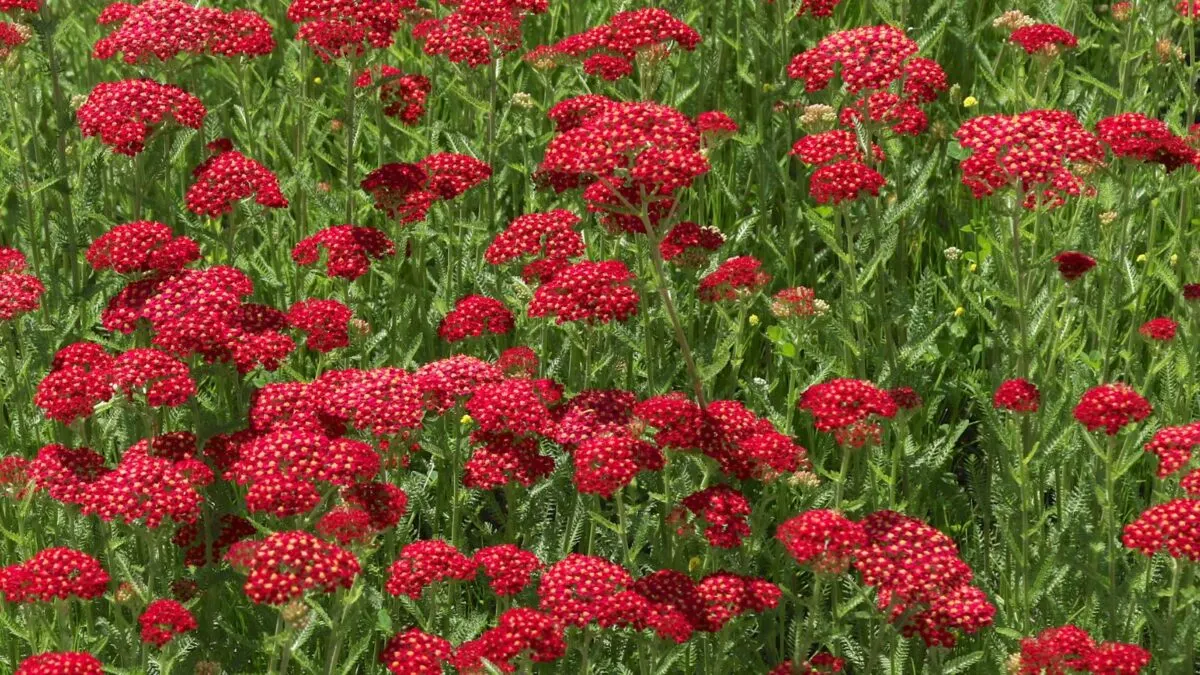
USDA Hardiness Zones 3-8
Yarrow is technically an herb that blooms from June through September on stems between two and three feet tall. Traditionally, yarrow has white flowers, but you can find cultivars in several colors, including yellow, pink, rust-brown, and red. Historically, yarrow has sometimes been used medicinally to staunch blood flow.
In modern times, gardeners love yarrow because it is a beautiful and low-maintenance flower. The plants need to be divided every three to five years, and if you deadhead them, the flowers will bloom for longer. Plant yarrow in full sun.
19. English lavender (Lavandula angustifolia)

USDA Zones 4-9 (depending on cultivar)
What do you think of when you think of lavender? For most people, it’s all about the scent. Lavender is used as an essential oil to give a calming aroma to homes, and you can find this fragrant herb in everything from laundry detergent to hand lotion and sachets. Above all, lavender brings elegance and grace to any garden.
English lavender grows between two and three feet tall and blooms from early summer through the end of August (learn how to grow lavender).
Most people know of lavender in shades of purple, but you can also find this flower in blue and even pink or white. Lavender thrives in full sun and well-drained soil.
20. Butterfly bush (Buddleja)
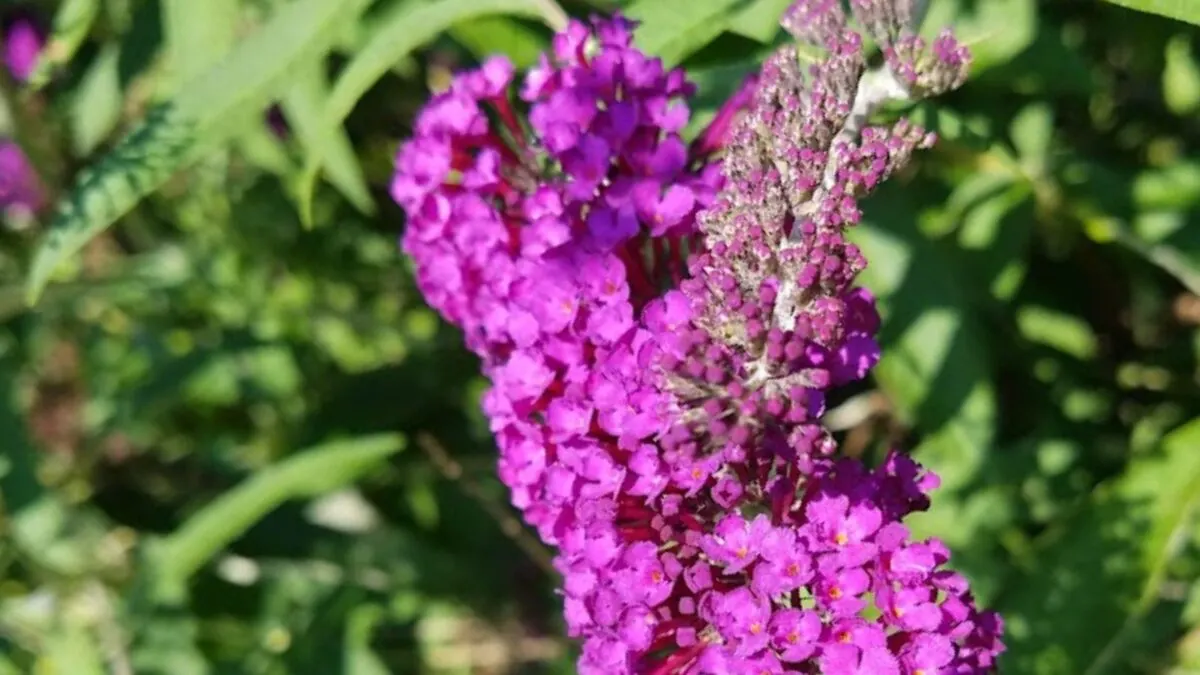
USDA Hardiness Zones 5-9
A butterfly bush does exactly what you think it might do: it attracts butterflies. Butterfly bushes grow to be between six and eight feet tall, and sometimes even taller. However, you can find smaller compact plants. For example, “Blue Chip” is only one to two feet tall and doesn’t spread rampantly.
Butterfly bushes come in shades of purple, blue, pink, and white. They love full sun and well-drained, medium-moisture soil.
21. Bee balm (Monarda)

USDA Hardiness Zones 4-9
Bee Balm plants are prized by gardeners for their vibrant, bright flowers. These herbaceous perennials grow beautifully in North America because they’re native to our continent. Another interesting fact is that they’re also considered to be a part of the mint family, so technically, they are also herbs.
The leaves of the Bee Balm plant are aromatic and have lots of medicinal and culinary uses. This versatile plant will produce clusters of tubular flowers that are purple, pink, or scarlet. They bloom in mid-summer and are long-blooming perennials for your garden. Expect these plants to grow up to three feet or taller.
22. Ice Plant (Aizoaceae)

USDA Hardiness Zones 4-8
If you’re looking for a perennial that thrives in various climates, the Ice Plant is an excellent choice. Interestingly, this plant is native to Africa, and it originates from the cold plateaus found in the Great Karoo desert, the Drakensberg Mountains, and other areas of the continent.
Ice Plant has become a favorite with northern gardeners in the U.S. because of its cold hardiness. You can grow an Ice Plant in various colors, including orange, yellow, scarlet, purple, magenta, pink, and more.
If you’re looking for good pollinators, go with the Delosperma variety, an amazing nectar source for valuable honeybees.

Beautiful Flower Garden Ideas
Sunday 29th of August 2021
[…] 21 Must See Long Blooming Perennial Flowers […]